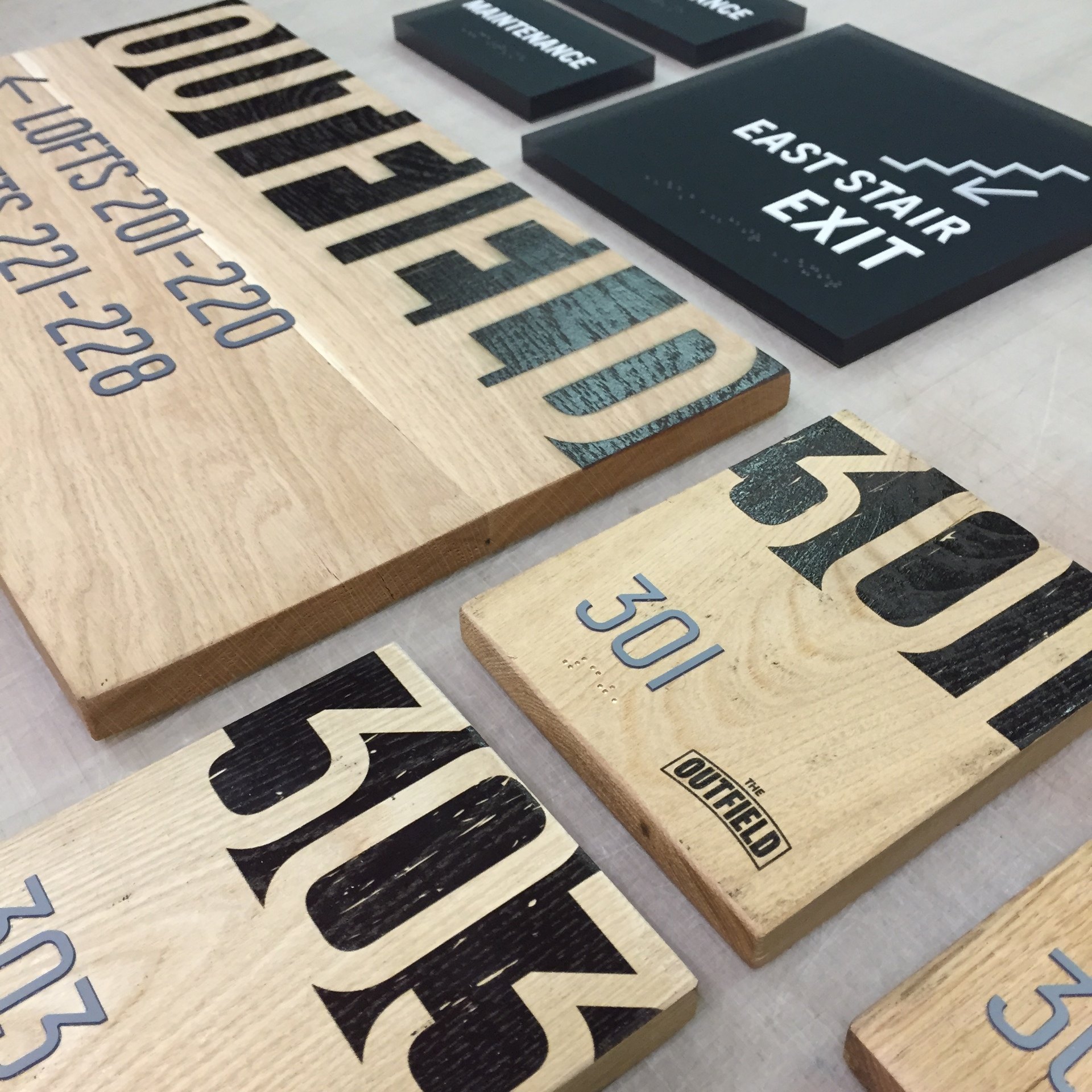Checking Out the Trick Functions of ADA Indications for Enhanced Ease Of Access
In the realm of availability, ADA signs offer as quiet yet effective allies, making sure that rooms are navigable and comprehensive for people with disabilities. By incorporating Braille and responsive components, these indications damage barriers for the visually damaged, while high-contrast shade plans and legible font styles provide to varied visual demands.
Importance of ADA Compliance
Making certain compliance with the Americans with Disabilities Act (ADA) is crucial for cultivating inclusivity and equivalent access in public areas and offices. The ADA, enacted in 1990, mandates that all public facilities, companies, and transportation services fit individuals with disabilities, ensuring they delight in the exact same legal rights and opportunities as others. Conformity with ADA criteria not just fulfills lawful responsibilities yet additionally enhances an organization's track record by demonstrating its commitment to diversity and inclusivity.
One of the key facets of ADA conformity is the execution of accessible signs. ADA indicators are created to make sure that people with impairments can easily browse with rooms and structures.
Furthermore, adhering to ADA guidelines can alleviate the risk of prospective fines and lawful repercussions. Organizations that fall short to abide by ADA standards might face charges or suits, which can be both financially challenging and harmful to their public photo. Thus, ADA conformity is integral to cultivating a fair atmosphere for every person.
Braille and Tactile Aspects
The unification of Braille and tactile aspects right into ADA signs personifies the concepts of availability and inclusivity. It is normally positioned beneath the corresponding text on signs to ensure that individuals can access the info without visual assistance.
Tactile aspects prolong beyond Braille and include raised characters and symbols. These parts are designed to be noticeable by touch, enabling people to determine area numbers, restrooms, exits, and various other essential areas. The ADA sets certain standards pertaining to the dimension, spacing, and placement of these tactile elements to maximize readability and make sure consistency across different settings.

High-Contrast Shade Schemes
High-contrast color pattern play a pivotal role in boosting the visibility and readability of ADA signs for individuals with aesthetic disabilities. These schemes are essential as they maximize the distinction in light reflectance in between text and background, ensuring that indications are easily discernible, also from a range. The Americans with Disabilities Act (ADA) mandates the use of specific shade contrasts to accommodate those with restricted vision, making it an essential facet of compliance.
The efficiency of high-contrast colors hinges on their capacity to stick out in different lights conditions, including poorly lit environments and areas with glare. Normally, dark text on a light background or light message on a dark history is employed to accomplish optimum contrast. For instance, black message on a yellow or white background gives a stark visual distinction that helps in fast acknowledgment and comprehension.

Legible Fonts and Text Dimension
When considering the layout of ADA signs, the choice of clear fonts and appropriate text size can not be overemphasized. The Americans with Disabilities Act (ADA) mandates that typefaces need to be not italic and sans-serif, oblique, script, highly decorative, or of unusual form.
The dimension of the message also plays a critical duty in ease of access. According to ADA guidelines, the minimal text height ought to be 5/8 inch, and it must enhance proportionally with watching distance. This is particularly crucial in public areas where signage requirements to be checked out quickly and properly. Consistency in message dimension contributes to a cohesive aesthetic experience, aiding people in navigating settings effectively.
Additionally, spacing in between lines and letters is important to legibility. Appropriate spacing avoids personalities from appearing crowded, boosting readability. By adhering to these criteria, designers can dramatically improve access, guaranteeing that signs serves its designated objective for all individuals, despite their aesthetic abilities.
Reliable Placement Techniques
Strategic positioning of ADA signs is necessary for making best use of ease of access and making sure conformity with lawful standards. Appropriately positioned indications assist people with disabilities efficiently, assisting in navigating in public areas. Trick considerations include proximity, height, and exposure. ADA guidelines stipulate that signs need to be mounted at a height between 48 to 60 inches from the have a peek at this website ground to guarantee they are within the line of view for both standing and seated people. This common height range is critical for inclusivity, enabling wheelchair customers and individuals of varying heights to accessibility info easily.
In addition, signs need to be placed beside the latch side of doors to permit very easy recognition prior to entry. This positioning aids people situate spaces and spaces without blockage. In situations where there is no door, signs ought to be situated on the nearby adjacent wall surface. Uniformity in indication placement throughout a facility improves predictability, minimizing complication and boosting total customer experience.

Final Thought
ADA indications play a crucial duty in advertising access by incorporating functions that deal with the demands of individuals with impairments. These aspects collectively foster an inclusive environment, highlighting the value of ADA compliance in ensuring equivalent gain access to for all.
In the world of accessibility, ADA indicators offer as silent yet powerful allies, making certain that rooms are comprehensive and navigable for individuals with handicaps. The ADA, established in check that 1990, mandates that all public facilities, employers, and transportation solutions fit individuals with handicaps, guaranteeing they take pleasure in the very same legal next rights and opportunities as others. ADA Signs. ADA signs are made to make sure that individuals with specials needs can quickly navigate via buildings and rooms. ADA guidelines specify that indications should be placed at a height in between 48 to 60 inches from the ground to ensure they are within the line of sight for both standing and seated people.ADA indications play a vital function in promoting access by integrating attributes that deal with the demands of individuals with impairments
Comments on “ADA Signs: Important Devices for Inclusive Atmospheres”